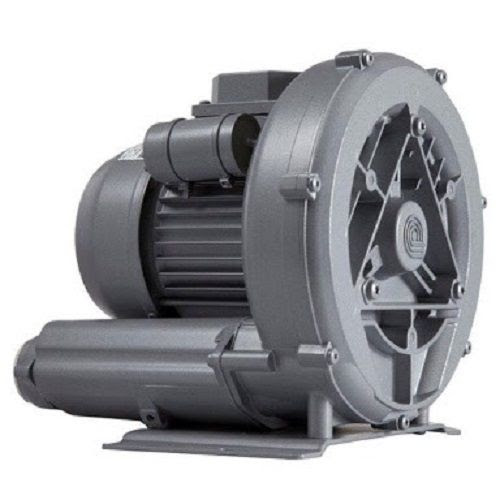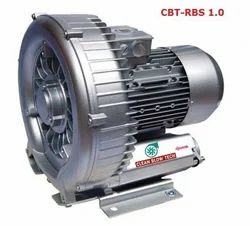What is the difference between a blower and a fan?
Let us look at some differences between a fan and a blower.
A fan is an electrical device, while a blower is a mechanical device.
Fans have blades that help to creates a continuous airflow and circulate the air around in every direction, whereas a blower has impellers that channel the air in a specific direction towards a particular location.
Fans can move large amounts of air/gas at low pressure. The components of a fan are a rotor (impeller) to which the blades are attached. The impeller allows the fan to channel the airflow even at a minor change in the pressure. Fans have a specific pressure ratio of 1.1. Blowers, on the other hand, can move large volumes of air/gas at a moderate pressure setting. It comprises of a wheel attached with small blades and a casing that helps direct the airflow towards a specific location. The pressure ratio of blowers is 1.1 to 1.2.
Fans push out the air axially, that is, the direction of airflow is along the axis of the rotor. Blowers use centrifugal force to blow out the air.
Fans are usually smaller in size compared to blowers.
What is the difference between a blower and a fan?
Motor Of Fan And Blower
Usually, fans and blowers have DC motors that allow you to increase or decrease the airflow very efficiently. Fan motors merely torque up the shaft of the fan which in turn causes the blades attached to it to rotate. Hence, the air circulation is confined mostly in and around the area where the fan is located. Contrary to this, blower motors use the kinetic energy created by the impellers to increase or decrease the volume of the airflow.
Energy Efficiency
The efficiency of fans and blowers depend on the design of their blades and how they propel the air, that is, axially or centrifugally. In axial flow, the air that enters the fan leaves it without any change in the direction. Whereas, in centrifugal flow, the air changes direction twice, once when it enters the fan and once while leaving it.
When we talk about energy efficiency, fans consume less power than blowers and hence, are more energy efficient. But when it comes to airflow, blowers are known to produce more airflow than fans.
Apart from these factors, here are some other factors that determine the efficiency or inefficiency of fans and blowers.
If the blower or the fan system has leaks in the ducts through which a significant amount of air can get through, the device is inefficient.
An efficient and properly functioning blower or fan will have relatively low operating and maintenance costs.
Silent operation is a sign of an efficient blower or fan.
High versatility in terms of adjustment of the airflow is also a sign of efficiency.
How do you Unflood a leaf blower?
How do you fix a leaf blower that won’t start?
How do you start a leaf blower?
What is the difference between a blower and a fan?
What does blower motor do?
Can you use a leaf blower on wet leaves?
Are leaf blowers worth it?
Should I get a leaf blower or vacuum?
How does a Roots blower work?
What is the difference between a Roots blower and a screw blower?
What is a lobe blower?
 وکیوم آبی و بلوئر هوا فروش و تعمیر انواع وکیوم آبی و بلوئر هوا
وکیوم آبی و بلوئر هوا فروش و تعمیر انواع وکیوم آبی و بلوئر هوا










